
SEAT Leon engines, drive and performance
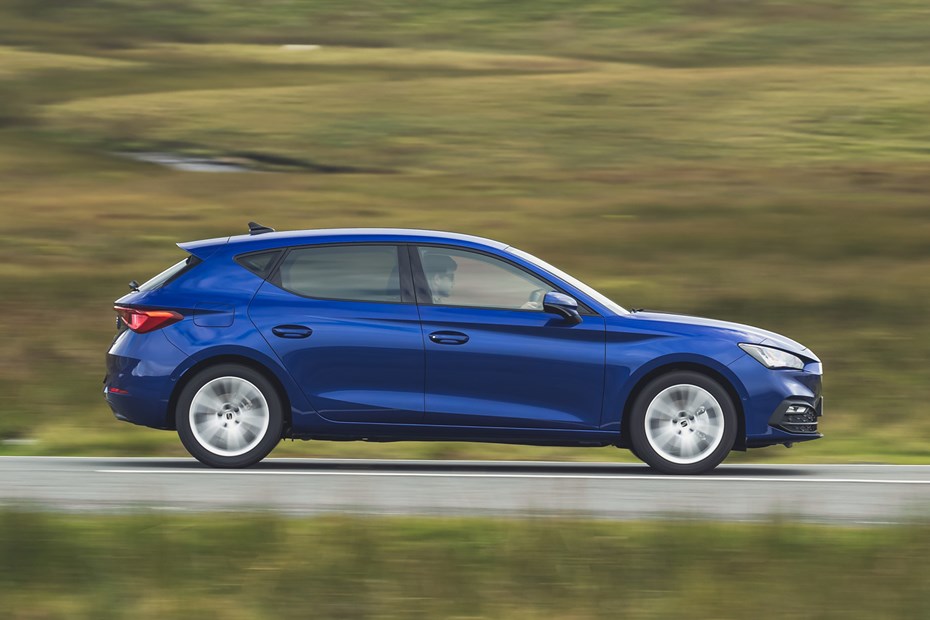
- Three petrols, one mild hybrid, one plug-in hybrid and one diesel
- Good performance throughout the range
- Petrols best compromise for most people
Petrol engines
The entry-level petrol engine is a 1.0-litre three-cylinder. The on-paper figures may not look particularly exciting, but it’s adequate for those who don’t regularly carry a car-full of passengers or cargo. It’s a sweet enough engine, but has very tall gearing – so you have to rev it quite hard and drop a gear or two to maintain decent progress on faster roads.
The mid-range petrol is a 1.5-litre four-cylinder. Power delivery feels a little inconsistent, but once above 2,000rpm it’s smooth, eager to rev and pulls strongly. It can be reluctant below this point to regain speed, which can prove frustrating having slowed down for a roundabout or junction.
Of more interest is the eTSI mild hybrid system, which uses the same 1.5-litre petrol engine and achieves similar performance figures with a seven-speed DSG automatic gearbox instead of a manual. The mild-hybrid system uses a 48-volt starter-generator, which allows the car to coast at certain speeds, shutting off the petrol engine completely – the net result is better fuel economy and lower emissions. There’s also a modest electrical boost from the hybrid system under acceleration, too.
Plug-in hybrid
The plug-in hybrid (badged e-Hybrid) uses a 1.4-litre petrol engine and a 75kW electric motor to produce a combined 204hp. The official 0-62mph time is an impressive 7.5 seconds, but where the e-Hybrid comes into its own is in the 50-70mph sprint that’s all so important for overtaking. When the petrol and electric combine it gives drivers a real shove in the back. This aids smooth and safe overtaking, but also provides just a little bit of fun in day-to-day driving.
The Leon starts up in e-mode, the driving mode that tries to use electrical power rather than petrol. The car’s intelligent enough to cycle between e-mode and hybrid mode itself, but drivers can also choose in one of the endless sub menus. Drivers can also maintain the battery’s state of charge manually, saving it for built up areas.
The 13kWh battery provides an official electric-only range of 40 miles, but we reckon it’s more like 20-30 depending on how quickly you travel and how cold it is. You can plug it in to a standard electric car chargepoint, and SEAT says it will fully charge from empty in around 3.5 hours on a typical domestic charger.
Diesel engine
The sole diesel is a 2.0-litre TDI unit producing 115hp. Considering its size, the performance figures may look a little underwhelming, but in reality it’s been tuned for achieving maximum fuel economy, not speed.
The low-pitch diesel thrum is apparent at low speeds and when idling, yet it never feels too intrusive and disappears almost completely at higher speeds. It accelerates well too, to the point where you’d question whether there’s an extra 15 or so horsepower hiding under the bonnet. 0-62mph takes 10.4 seconds, but there’s reasonable in-gear pulling power thanks to a hefty amount of torque being available from just 1,500rpm. Diesels may be falling rapidly out of a favour, but if you do plenty of motorway miles and want 60mpg+ fuel economy, the 2.0 TDI could be an excellent choice.
What’s it like to drive?
- Sharp steering
- Comfortable
- Responsive brakes
The steering response is sharp, and while there’s little feel through the wheel, there’s a bit of weighting that builds up. It’s still an improvement to the numb steering found in other hatchbacks.
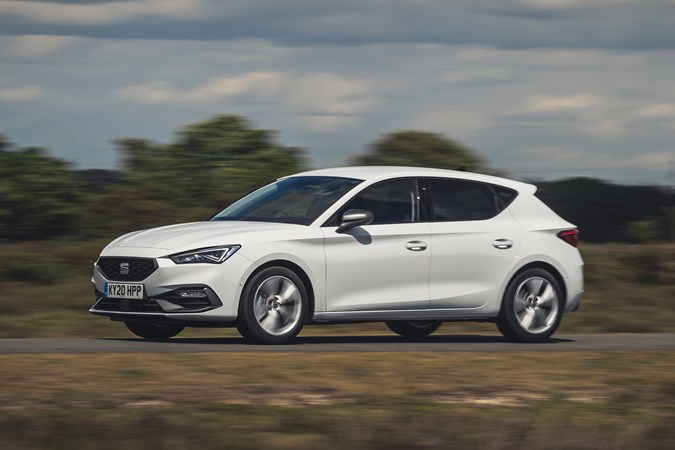
Switching between the drive modes doesn’t make a discernible difference, but you can build into a rhythm down a winding country lane. There’s lots of grip with a great deal of composure and containing the level of body roll. Should you push beyond the limits, the Leon is quite playful.
Traction is high and the brakes are strong; the pedal is nicely weighted without feeling too assisted and brings the Leon to a halt quickly enough, helping it feel quite light on its feet.
The six-speed gearbox is slick to use, with a short lever and a narrow gate (the movement between each row of gears) – so much so, that initial use led us to sometimes believe that we had engaged first gear, rather than reverse. The Ford Focus is still a bit more involving to drive but this is close.
Lower-spec base models ride well and we’d encourage buyers wanting a cosseting ride to shun the option of upgraded, bigger alloy wheels. We’ve driven the popular FR model on 18-inch wheels and sports suspension and found it to be quite firm.




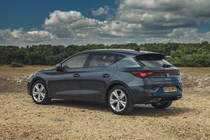
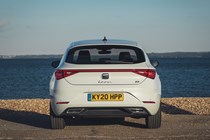
.jpg)
.jpg)
.jpg)
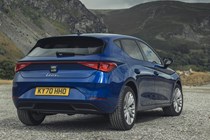


.jpg)
.jpg)
.jpg)
.jpg)

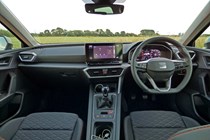
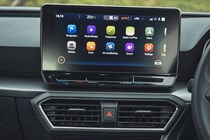
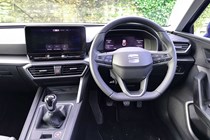
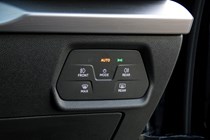

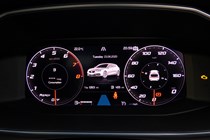
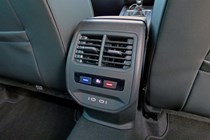
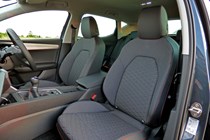

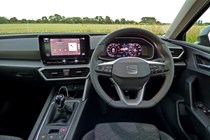
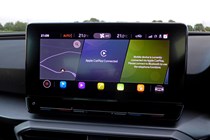
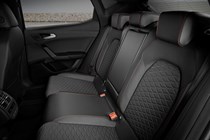
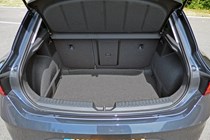
.jpg)
.jpg)
.jpg)






.jpg?quality=50)
.jpg?quality=50)
.jpg?quality=50)



.jpg?quality=50)
.jpg?quality=50)
.jpg?quality=50)
.jpg?quality=50)














.jpg?quality=50)
.jpg?quality=50)
.jpg?quality=50)